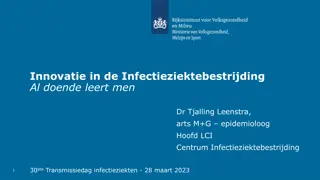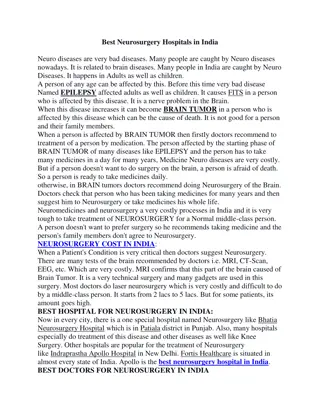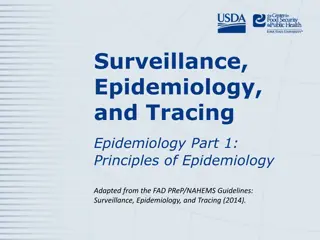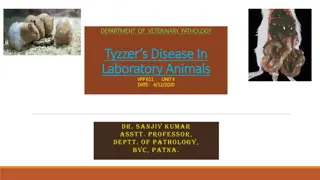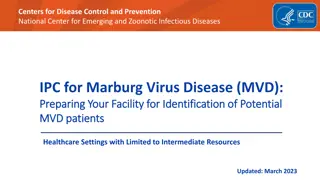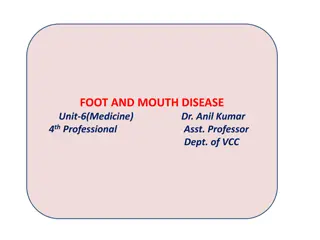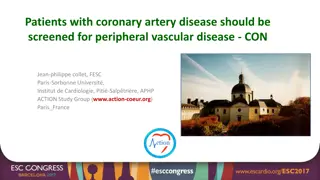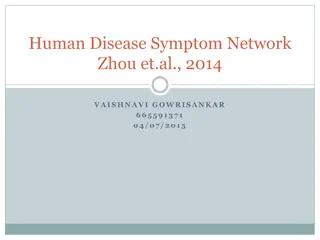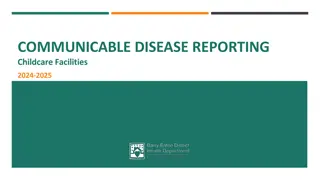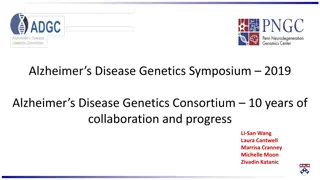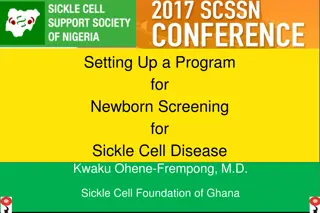Bullous disease
Pemphigus vulgaris is characterized by IgG autoantibodies causing blister formation on skin and mucous membranes. Learn about its epidemiology, clinical presentation, diagnostic methods, and treatment options including topical steroids and systemic immunosuppression.
Download Presentation

Please find below an Image/Link to download the presentation.
The content on the website is provided AS IS for your information and personal use only. It may not be sold, licensed, or shared on other websites without obtaining consent from the author.If you encounter any issues during the download, it is possible that the publisher has removed the file from their server.
You are allowed to download the files provided on this website for personal or commercial use, subject to the condition that they are used lawfully. All files are the property of their respective owners.
The content on the website is provided AS IS for your information and personal use only. It may not be sold, licensed, or shared on other websites without obtaining consent from the author.
E N D
Presentation Transcript
Pemphigus vulgaris: Epidemiology and pathophysiology: The prevalence of pemphigus vulgaris in men and women is approximately equal. The mean age of onset of disease is 50 to 60 years, although the range is broad and disease arising in the elderly and in children has been described. The hallmark of pemphigus is the finding of IgG autoantibodies against the cell surface of keratinocytes(desmoglein 3 and desmoglein 1). The pemphigus auto antibodies found in patients sera play a primary pathogenic role in inducing the loss of cell adhesions between keratinocytes, and subsequent blister formation.
Clinical features: The primary lesion of PV is a flaccid blister, which may occur anywhere on the skin surface, but typically not the palms and soles. Usually, the blister arises on normal-appearing skin, but it may develop on erythematous skin with predilection for the scalp, face, neck, upper chest and back. Because PV blisters are fragile, the most common skin lesions observed in patients are erosions resulting from broken blisters. In the majority of patients, painful mucous membrane erosions are the presenting sign of PV and may be the only sign for an average of 5 months before skin lesions develop,The mucous membranes most often affected by PV are those of the oropharyngeal cavity and nasal mucosa.
Diagnosis: Clinical diagnosis Skin Biopsy for Light Microscopy: Suprabasal epidermal cells separate from the basal cells to form clefts and blisters. Basal cells remain attached to the basement membrane but separate from one another and stand like a row of tombstones on the floor of the blister. Direct Immunofluorescence of Skin and Mucous Membranes:The diagnosis of pemphigus is confirmed by direct IF which shows linear IgG and often C3 deposited on the surface of keratinocytes throughout the epidermis in perilesional skin. Indirect Immunofluorescence: Serum IgG antibodies directed against the keratinocyte cell surface can be demonstrated by indirect immunofluorescent staining
Treatment: Topical Steroids: Patients with mild pemphigus vulgaris responded to clobetasol propionate 0.05% cream applied to mucosal lesions and involved skin twice a day for at least 15 days, followed by progressive tapering . Systemic Corticosteroids and Immunosuppressive Agents: Systemic glucocorticosteroids are still the mainstay of therapy,Prednisolone 0.5 1 mg/ kg/day in combination with adjuvant immunosuppression (azathioprine, mycophenolate mofetil, cyclophosphamide) is sufficient to initiate disease control in many patients
Rituximab has been used for refractory pemphigus vulgaris. High-dose IVIg is another option for resistant disease. Plasmapheresis is useful for quickly reducing the titers of circulating autoantibodies and should be considered for severe pemphigus if the disease is unresponsive to a combination of prednisone and immunosuppressives. In patients with widespread blistering, intensive nursing care is mandatory. Opportunistic infection is the major cause of death in patients with widespread blistering who are also immunosuppressed and potassium permanganate and topical antiseptics may help reduce the risk of cutaneous infection. Liberal use of emollients will reduce frictional stress on affected skin.
Bullous Pemphigoid: Epidemiology and pathophysiology: Bullous pemphigoid is the most common autoimmune blistering disorder in the adult population. Bullous pemphigoid typically occurs in patients older than 60 years of age, with a peak incidence in the 70s.There is no known ethnic, racial, or sexual predilection for developing bullous pemphigoid. BP is an example of an immune-mediated disease that is associated with a humoral and cellular response directed against two well-characterized self- antigens: BP antigen 180 (BP180, also known as BPAG2 or type XVII collagen) and BP antigen 230 (BP230, also referred to as the epithelial isoform of BPAG1).
Clinical Features: The classic form of bullous pemphigoid is characterized by large, pruritic ,tense blisters arising on normal skin or on an erythematous or urticarial base. These lesions are most commonly found on flexural surfaces, the lower abdomen, and the thighs, although they may occur anywhere. The bullae are typically filled with serous fluid but may be hemorrhagic. Eroded skin from ruptured blisters usually heals spontaneously without scarring, although milia can occur, and postinflammatory pigmentation is common. Nonbullous lesions are the first manifestation of bullous pemphigoid in almost half of patients. Often, urticarial type lesions precede the more classic tense bullae early in the course of disease. Other early nonbullous findings include eczematous, serpiginous, or targetoid erythema multiforme-like lesions.
Diagnosis: The diagnosis of bullous pemphigoid is made based on clinical, histologic, and IF features. Skin pathology shows subepidermal blisters with eosinophils and other inflammatory cells. Direct immunofluorescence (IF) of perilesional skin shows linear IgG (usually IgG1 and IgG4, although all IgG subclasses and IgE have been reported) and C3 along the basement membrane Indirect IF shows IgG anti basement membrane autoantibodies in the serum.
Treatment: Treatment depends on multiple factors, including extent of disease and patient comorbidities.Patients with localized bullous pemphigoid often can be treated successfully with topical corticosteroids alone. For extensive disease, defined by some authors as either >10 new blisters/day or inflammatory lesions involving a large body surface area, a regimen of oral prednisone at a dose of 0.5 1 mg/kg/day is often recommended. Immunosuppressive therapies can serve as steroid-sparing agents and are employed when corticosteroids alone fail to control the disease, there are contraindications to the use of systemic corticosteroids, and/or comorbidities exist that limit the dosage of corticosteroid (e.g. diabetes mellitus, osteoporosis, psychosis). The most frequently employed agents are azathioprine, mycophenolate mofetil, methotrexate, and cyclophosphamide.
Dermatitis herpetiformis (DH) Dermatitis herpetiformis (DH) is a cutaneous manifestation of gluten sensitivity. Although over 90% of DH patients have evidence of a gluten-sensitive enteropathy, only about 20% have intestinal symptoms of celiac disease (CD). Both the skin disease and the intestinal disease respond to gluten restriction and recur with institution of a gluten-containing diet. Although DH is usually a lifelong condition, the course may wax and wane. A spontaneous remission may occur in up to 10% of patients, but most clinical remissions are related to dietary gluten restriction .
Epidemiology and pathophysiology: DH occurs most commonly in people of northern European origin. It is uncommon in African-Americans and Asians. The mean age of onset is during the fourth decade.DH occurs more frequently in men as compared to women. The pathology in dermatitis herpetiformis and GSE results from an IgA dominant autoimmune response to transglutaminase molecules. In GSE, the principal target is tissue transglutaminase (tTG)whereas in dermatitis herpetiformis there is increasing evidence that epidermal transglutaminase 3 (TG3) may be the dominant antigen .
Clinical Features: The characteristic lesions of dermatitis herpetiformis are grouped erythematous papules and vesicles located over extensor sites. Because the condition is so pruritic, intact vesicles are rarely seen and the patient may simply present with excoriations. Lesions tend to be symmetrical and heal without scarring. Most patients usually can predict the eruption of a lesion as much as 8 to 12 hours before its appearance because of localized stinging, burning, or itching. Less common presentations are isolated facial involvement, exclusively macular lesions, and hemorrhagic acral macules (usually palmoplantar).
Diagnosis: Four findings support the diagnosis of DH: pruritic papulovesicles or excoriated papules on extensor surfaces. neutrophilic infiltration of the dermal papillae with vesicle formation at the dermal epidermal junction. granular deposition of IgA within the dermal papillae of clinically normal- appearing skin adjacent to a lesion by direct IF. a response of the skin disease, but not the intestinal disease, to dapsone therapy. Anti-endomysial antibodies are very specific for CD and DH. Their levels indicate the severity of the gluten-sensitive enteropathy and reflect the degree of compliance to dietary gluten restriction.
Chronic Bullous Disease of Childhood: Rare blistering disorder of childhood presenting predominantly in children younger than 5 years of age. Clinical presentation of tense bullae, often in perineum and perioral regions, giving a cluster-of-jewels appearance. New lesions sometimes appear around the periphery of previous lesions with a collarette of blisters. Histology shows subepidermal collection of neutrophils at the basement membrane, similar to linear IgA bullous dermatosis. Most patients respond dramatically to treatment with dapsone.Spontaneous remissions, often within 2 years, are frequent.
Epidermolysis bullosa: Epidermolysis bullosa acquisita (EBA): Rare, autoimmune subepidermal bullous disease due to immunoglobulin G autoantibodies to Type VII collagen. Skin fragility, subepidermal blisters, residual scarring, and milia formation. Common sites are trauma-prone areas such as hands, feet, elbows, knees, sacrum, nails, and mouth. Related features may include an underlying systemic disease such as inflammatory bowel disease. May have erosions of the mucosa and esophageal stenosis. Pathology shows subepidermal bullae and positive direct immunofluorescence for immunoglobulin G deposits at the epidermal dermal junction.
Inherited epidermolysis bullosa: Epidermolysis bullosa is a family of inherited genodermatoses characterized by noninflammatory blistering in response to minor trauma. Blistering level categories are the simplex, hemidesmosomal, junctional, and dystrophic subtypes.Cutaneous involvement varies from localized to widespread blistering depending on subtype. Extracutaneous involvement varies from none to severely debilitating or lethal. The oropharynx, trachea, esophagus, eyes, teeth, nails, hair can be involved depending on subtype. Diagnosis is made by immunofluorescent or electron microscopy followed by DNA analysis.


